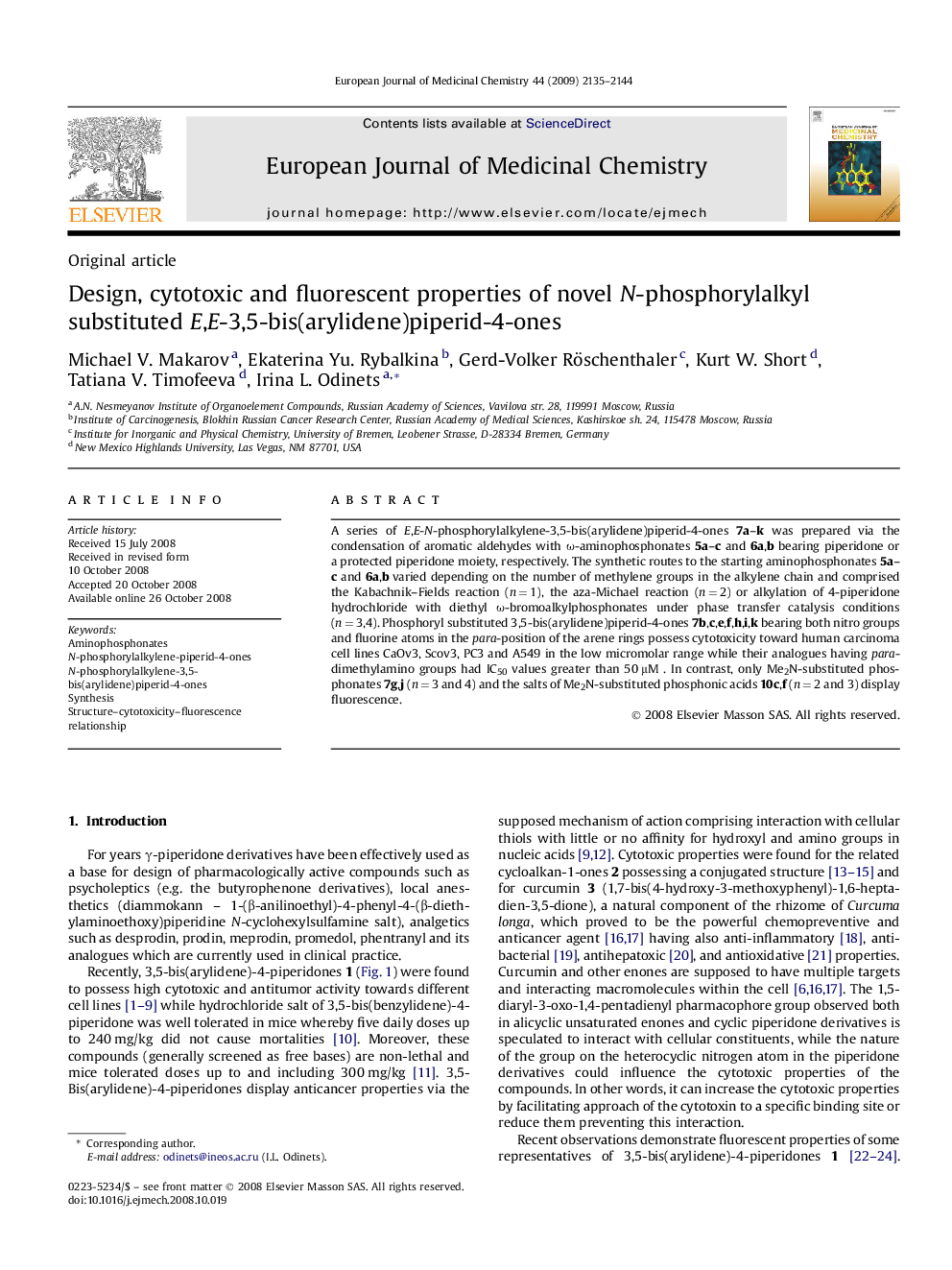| کد مقاله | کد نشریه | سال انتشار | مقاله انگلیسی | نسخه تمام متن |
|---|---|---|---|---|
| 1397955 | 1501201 | 2009 | 10 صفحه PDF | دانلود رایگان |

A series of E,E-N-phosphorylalkylene-3,5-bis(arylidene)piperid-4-ones 7a–k was prepared via the condensation of aromatic aldehydes with ω-aminophosphonates 5a–c and 6a,b bearing piperidone or a protected piperidone moiety, respectively. The synthetic routes to the starting aminophosphonates 5a–c and 6a,b varied depending on the number of methylene groups in the alkylene chain and comprised the Kabachnik–Fields reaction (n = 1), the aza-Michael reaction (n = 2) or alkylation of 4-piperidone hydrochloride with diethyl ω-bromoalkylphosphonates under phase transfer catalysis conditions (n = 3,4). Phosphoryl substituted 3,5-bis(arylidene)piperid-4-ones 7b,c,e,f,h,i,k bearing both nitro groups and fluorine atoms in the para-position of the arene rings possess cytotoxicity toward human carcinoma cell lines CaOv3, Scov3, PC3 and A549 in the low micromolar range while their analogues having para-dimethylamino groups had IC50 values greater than 50 μM. In contrast, only Me2N-substituted phosphonates 7g,j (n = 3 and 4) and the salts of Me2N-substituted phosphonic acids 10c,f (n = 2 and 3) display fluorescence.
Condensation of ω-aminophosphonates bearing piperidone or a protected piperidone moiety with aromatic aldehydes provides a convenient approach to E,E-N-phosphorylalkylene-3,5-bis(arylidene)piperid-4-ones possessing dark cytotoxicity towards human carcinoma cell lines CaOv3, Scov3, PC3 and A549 in the low micromolar range in the case of electron withdrawing substituents in the benzene rings and fluorescence properties for those having electron-donating groups.Figure optionsDownload as PowerPoint slide
Journal: European Journal of Medicinal Chemistry - Volume 44, Issue 5, May 2009, Pages 2135–2144